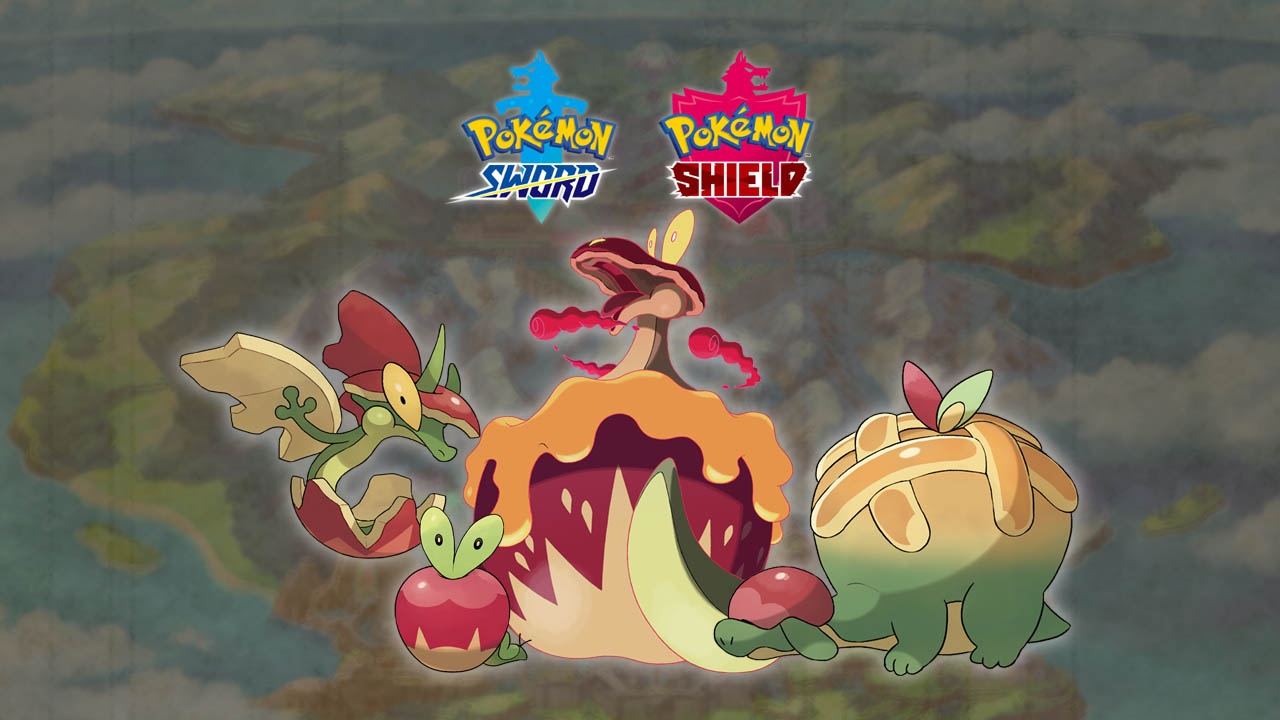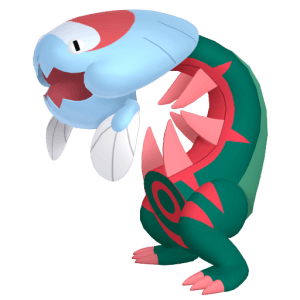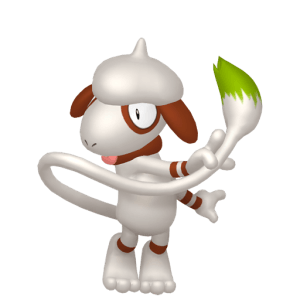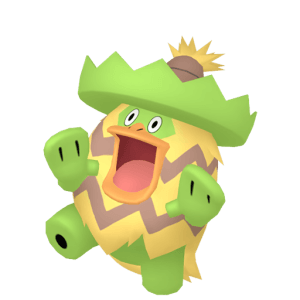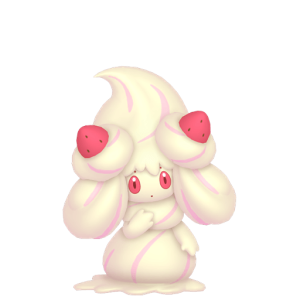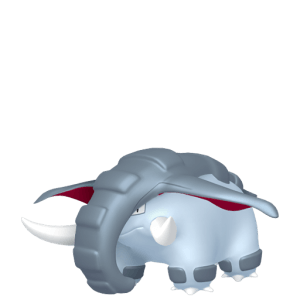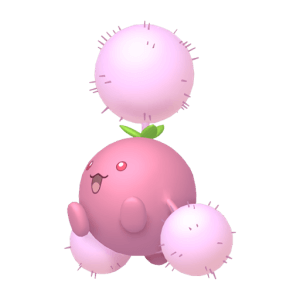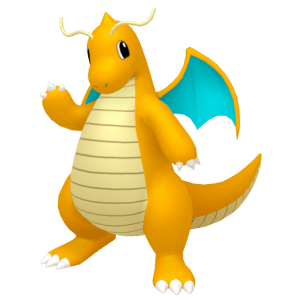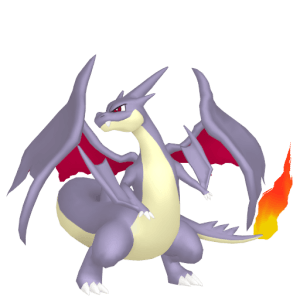In this recurring series, I’ll analyze the origins of Pokémon designs, their culture, and their historical allusions to British culture.
In this article we’ll take a look at a Grass-type Pokémon that appears in berry trees, falling down on the heads of trainers.
Applin
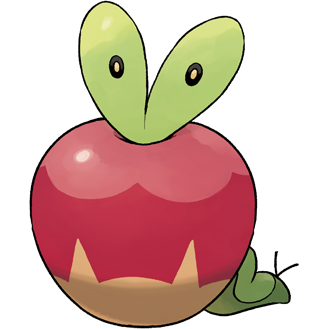
Applin is the Apple Core Pokémon, and it’s design is inspired by that fruit. More particularly it’s based on a worm that has wormed its way into an apple. As part of this process, the bottom of the apple has developed a rot that seems to resemble fangs. The leaves and stem at the top of the apple have developed blemishes that serve as its eyes.
The idea of a worm inside an apple is common, bringing to mind a classic kids joke:
What’s worse than finding a worm in your apple?
Finding half a worm.
These worms can often be the larvae of the codling moth, which are unable to digest leaves. Rather, they depend on fruits including apples and pears. When they crawl into the fruit, they stop it from growing and cause it to ripen early. While the moths are found all around the world, scholars theorize that they originated in Europe.
Apples as a fruit have also been spread around the world, although it seems to have originated in central Asia. Still, apples have found their way into Norse and Greek mythologies as the plant spread through trade. For a long time, “apple” was used as a generic term for most kinds of fruit in English. Bananas were once called “appel of paradis”. Today, it still remains a common fruit and has found many culinary uses.
Being embedded in an apple, Applin’s Grass-typing makes sense. It’s secondary Dragon-typing may derive from one Greek myth in particular. Ladon was a serpentine dragon that made its home in the Garden of the Hesperides, the orchard of the goddess Hera. Ladon’s role was to guard the golden apples that grew from a tree Hera owned, which was a gift from her husband Zeus. The concept of a golden apple appears in several other Greek and Irish myths.
As the fruit spread and was cultivated by farmers, many distinct breeds have been cultivated. While most apples are red, there are cultivars which have yellow or green skins. The Granny Smith, which was cultivated by British native Maria Ann Smith after she immigrated to Australia. Applin’s shiny, which has a green skin, is a reference to one of these green cultivars.
It spends its entire life inside an apple. It hides from its natural enemies, bird Pokémon, by pretending it’s just an apple and nothing more.
As soon as it’s born, it burrows into an apple. Not only does the apple serve as its food source, but the flavor of the fruit determines its evolution.
These cultivars, in addition to having different colors, can also have different balances between tartness and sweetness. When Applin is presented with one of these apples, it seems to draw out the nutrients from the fruit and evolve.
Flapple
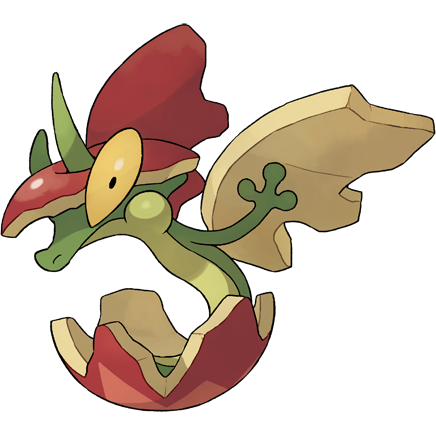
When Applin eats a Tart Apple, it seems to grow in size and break the apple open. It evolves into Flapple, the Apple Wing Pokémon. A horn forms through the apple, like a stem. Apple seeds turn into its eyes. Chunks of the fruit attach to its arms, like the wings of a bat, while the bottom of the apple sticks to its tail. Its name reflects its newfound wings, a combination of “Flap” and “Apple”.
It ate a sour apple, and that induced its evolution. In its cheeks, it stores an acid capable of causing chemical burns
It flies on wings of apple skin and spits a powerful acid. It can also change its shape into that of an apple.
Flapple’s winged design may be based in part on the codling moth in its adult form while maintaining the apple aesthetic. It may also be based in part on the British myth of Newton’s apple.
Isaac Newton was among other things, a mathematician from the seventeenth century. He was a student at Trinity College in Cambridge when it closed temporarily due to an outbreak of the Bubonic Plague. Newton devised a set of mathematical principles and theories that eventually developed into calculus and the theory of gravity.
There’s a common story told about Newton’s discovery of gravity, where he was inspired by watching an apple fall from a tree. In some retellings the apple hits him in the head. However, this folk story is likely apocryphal, told by Voltaire in one of his published works.
Nevertheless, Flapple seems to have some inspiration from this story. It has been given the signature move Grav Apple, which drops an apple on the target and lowers their defense. The power of the move is boosted in Gravity is in effect. The name of the move also sounds similar to the smaller fruit malus, commonly known as crab apple.
Appletun

On the other hand, if Applin eats a Sweet Apple it will then evolve into the Apple Nectar Pokémon Appletun. The sweetness seems to fill up Applin. While part of the apple remains on its head, its belly swells and bakes into something that looks like a pie. It also seems to have some design inspiration from tortoises. Its name may be a combination of “Apple” and “Turnover”. An apple turnover is a common British pastry.
In addition to a turnover, apple pies are also a pastry that originated from England. The first recipe seems to originate in England in the fourteenth century. Appletun shares the lattice design of crust above the blended apples.
Eating a sweet apple caused its evolution. A nectarous scent wafts from its body, luring in the bug Pokémon it preys on.
Its body is covered in sweet nectar, and the skin on its back is especially yummy. Children used to have it as a snack.
The Pokédex entries suggest a very interesting food chain for Appletun. Being naturally sweet, it is able to lure bug Pokémon nearby, which it then consumes. However, it then seems to be able to be harvested. The lattice structure on its back seems to be able to be removed, which is then can presumably regrow over time. Being very sweet, it likely attracts children in the same way it attracts bugs, but with different motives.
Its sweetness seems to contrast with its signature move Apple Acid which deals damage and lowers special defense. The description says the acid is derived from tart apples, although that does contradict that this Pokémon comes from sweet apples.
Rather, it is possible that the acid comes from amygdalin, a natural chemical that is found in the seeds of apples and several other fruits. When consumed, the chemical releases cyanide into the body, a deadly poison. Appletun doesn’t have any visible apple seeds on its body, unlike Flapple, so it may be storing the seeds deep inside itself which it can call upon in battle.
Gigantamax Flapple/Appletun
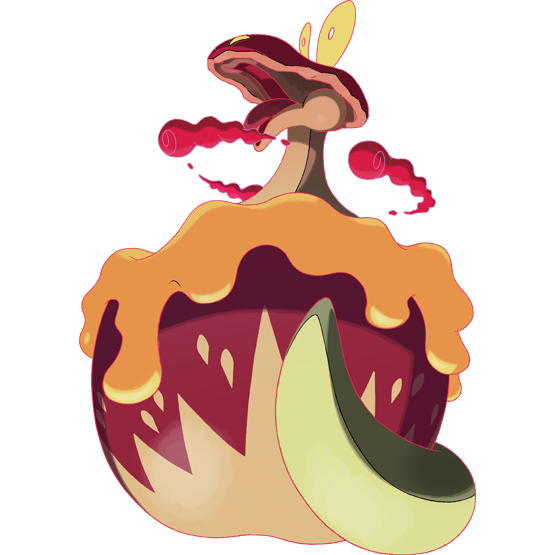
Flapple and Appletun, when Gigantamaxed, share the same look. The apple body reforms and begins to secrete a sweet syrup. It resembles a worm inside of a giant caramel apple, an apple that is covered in the sugary liquid. It is one style of candy apple, also known as toffee apples in England.
While both forms have the same design, they do have different signature G-Max moves. Gigantamax Flapple is able to use G-Max Tartness. That move lowers the evasiveness of targets, due to the stickiness of being covered in caramel.
Under the influence of Gigantamax energy, it produces much more sweet nectar, and its shape has changed to resemble a giant apple.
If it stretches its neck, the strong aroma of its nectar pours out. The scent is so sickeningly sweet that one whiff makes other Pokémon faint.
Gigantamax Appletun is able to learn the G-Max move G-Max Sweetness. That move heals the status condition of Appletun and its allies.
It blasts its opponents with massive amounts of sweet, sticky nectar, drowning them under the deluge.
Due to Gigantamax energy, this Pokémon’s nectar has thickened. The increased viscosity lets the nectar absorb more damage than before.
Conclusion
There have been several Pokémon throughout the franchise based on fruits. Cherubi was based on Japan’s cherry blossoms. Bounsweet was based on the mangosteen. Applin and its evolutionary line are based on a fruit that has been a big part of Britain’s nutritional, culinary, and mythological past and present. The inclusion of even more specific British culture like falling apples and apple pie make it an even better fit for Galar.
Let us know which Applin evolution you prefer in the comments or jump into the live discussion on Discord!

